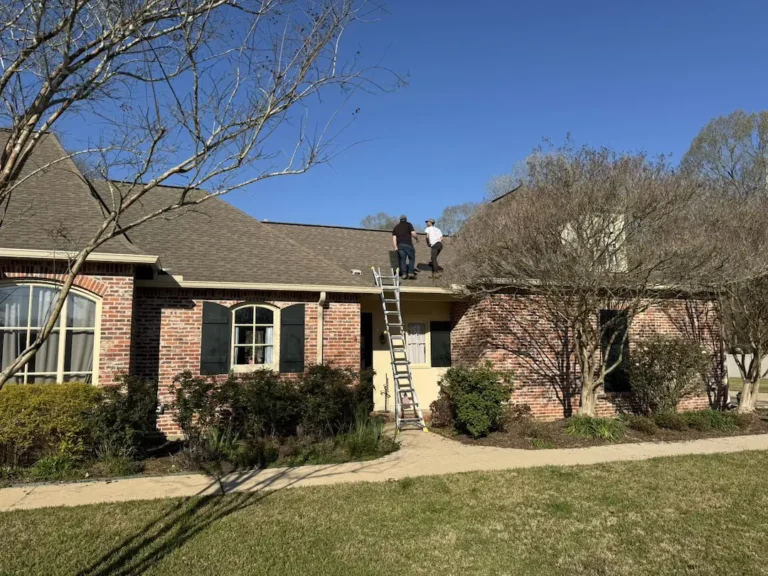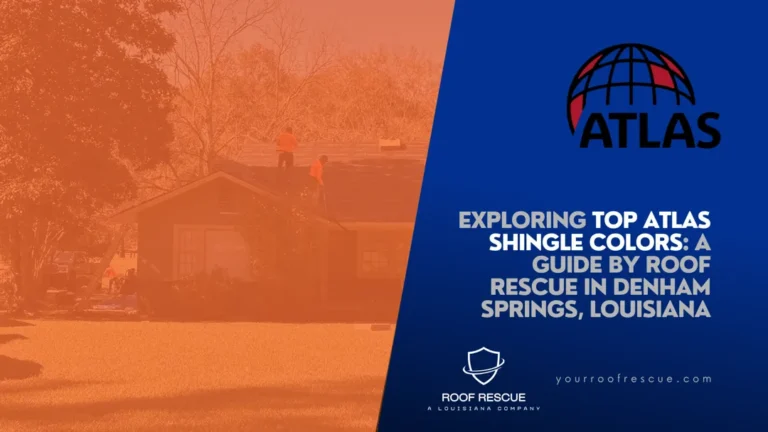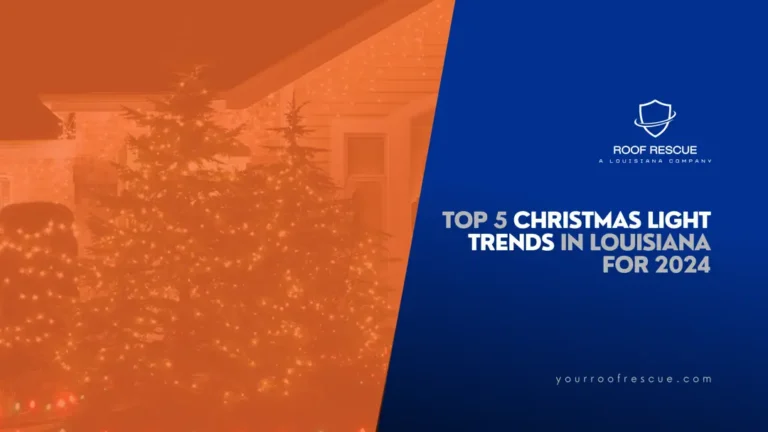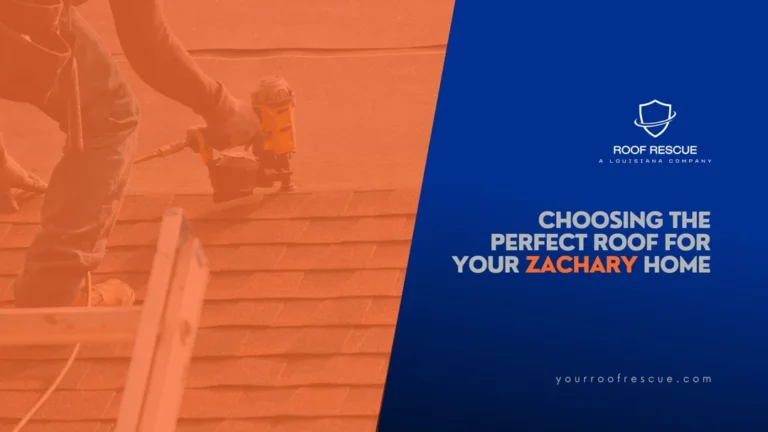Understanding and Addressing Black Streaking on Shingle Roofs: Causes, Prevention, and Solutions
Seeing black streaks on your shingled roof can be a cause for concern. After all, your roof is meant to protect your home and family from the elements, and black streaks certainly don’t look appealing. While these streaks may not cause immediate damage to your roof, they can lead to premature aging and other issues if left untreated. In order to understand how to address the problem, it’s important first to understand what causes these black streaks to occur.
Don’t wait for the damage to worsen. Schedule your free inspection with Roof Rescue today!
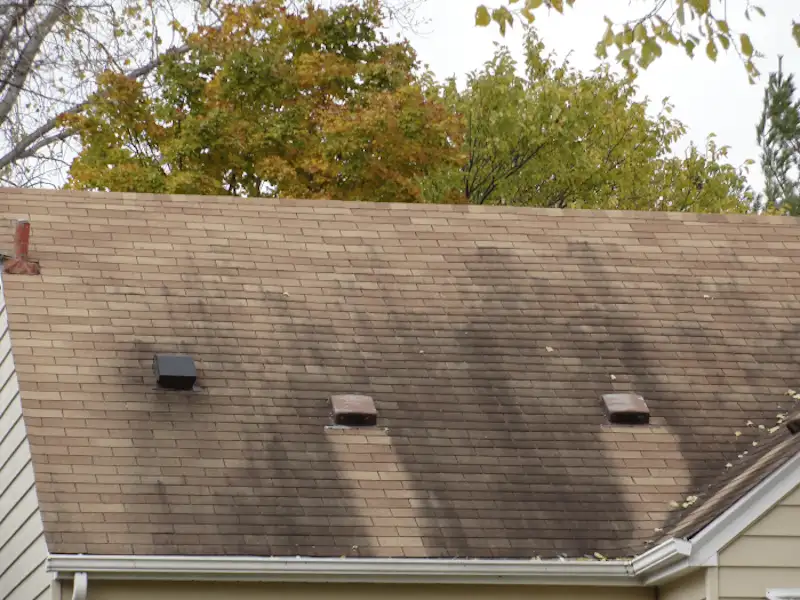
The Mystery Behind Black Streaks on Shingle Roofs
Black streaks on shingle roofs are most commonly caused by a type of algae called gloeocapsa magma. This type of algae is a blue-green bacteria that develops a hardened, darker outer coating, resulting in the black stains you see streaking your roof.
Gloeocapsa magma feeds on limestone, which is commonly used as a filler in asphalt shingles. As the algae colonies grow and spread on your roof, they can weaken the shingles and trap moisture, leading to premature aging and other issues.
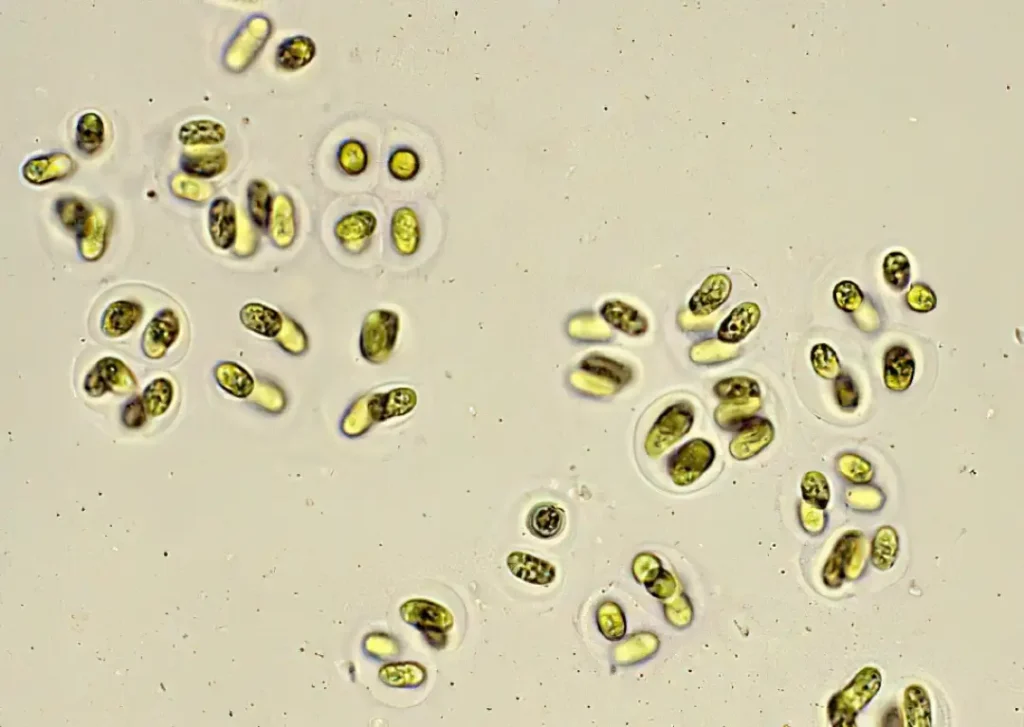
Unveiling the Impact of Black Streaks
The presence of black streaks on your shingle roof may seem like a minor cosmetic issue, but it can actually have a significant impact on the overall health and lifespan of your roof. Black streaks, caused by algae growth, can lead to premature aging of the roof, which can result in the need for roof replacement sooner than anticipated.
The algae colonies weaken the shingles and trap moisture, leading to deterioration and other damage, including wood rot. This can result in leaks, water damage, and the need for costly repairs or even a full roof replacement. By addressing black streaks early on, you can help extend the life of your roof and avoid these potential issues.
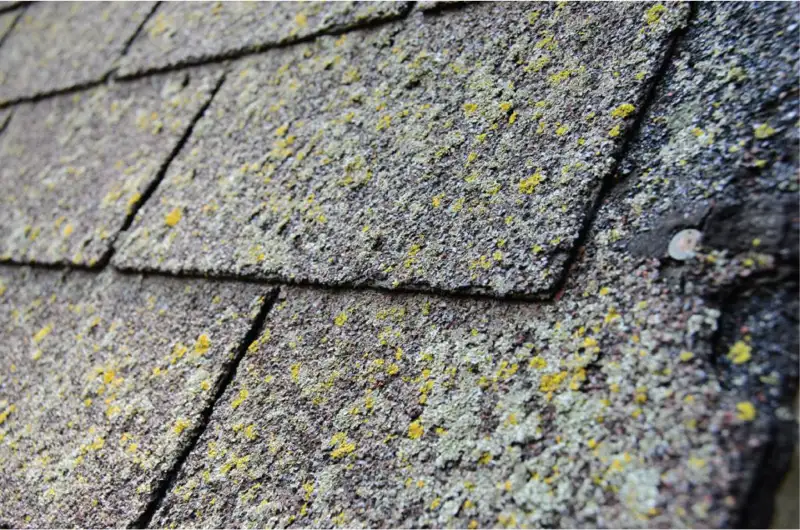
In addition to the potential damage to your roof, black streaks caused by algae growth can also have a negative impact on the aesthetic appeal of your home. The dark stains can make your roof look dirty and unkempt, detracting from the overall appearance of your home. This can affect the curb appeal and value of your property, especially if you are considering selling in the future. Therefore, it is important to take care of your roof and address these black streaks to prevent further damage and maintain the appearance of your home.
Don’t take our word on it; here’s a recent post on Reddit asking, “How do I remove streaks from an asphalt shingle roof?
Identification and Early Signs
Early detection of black streaks on your shingle roof is key to addressing the issue before it causes significant damage. Regular roof inspections can help you identify any signs of algae growth or black streaks early on. These black streaks may start as small spots or streaks and gradually spread across the roof.
If you notice any signs of black algae growth, it’s important to take action as soon as possible. Early detection allows for prompt removal and treatment, preventing the algae from causing further damage to your roof and extending its lifespan.
Don’t delay. Get your roof inspected by Roof Rescue today!
Common Misconceptions About Roof Discoloration
There are several common misconceptions about roof discoloration, particularly when it comes to black streaks caused by algae growth. It’s important to dispel these misconceptions in order to address the issue properly.
- Misconception 1: Black Streaks Are Caused by Mold or Dirt
- Many homeowners believe that black streaks on their roofs are caused by mold growth or accumulated dirt. In reality, the most common cause of these streaks is a type of algae called gloeocapsa magma. This blue-green algae thrives in humid environments and feeds on the limestone filler found in many asphalt shingles.
- Misconception 2: Roof Discoloration is Merely Cosmetic
- Another common misconception is that roof discoloration is purely a cosmetic issue that does not impact the roof’s functionality or longevity. However, algae growth can lead to significant problems if left untreated. The algae can retain moisture, leading to the premature aging of shingles, which can cause them to become brittle and lose their effectiveness. This can eventually compromise the roof’s integrity and result in costly repairs or replacements.
- Misconception 3: Algae Growth Only Occurs in Certain Climates
- Some believe algae growth and discoloration only occur in specific climates. While it’s true that algae thrive in humid environments, they can also be found in various climates. Wind, rain, and animals can carry algae spores from one place to another, meaning that roofs in many different regions can be affected.
By understanding these misconceptions and recognizing the true causes and impacts of roof discoloration, homeowners can take the necessary steps to prevent and treat algae growth, ensuring the longevity and health of their roofs.
Got questions? Contact Roof Rescue for expert advice.
Professional Vs. DIY Cleaning Methods
When it comes to removing black streaks caused by algae growth on your shingle roof, you have the option of hiring a professional or attempting a DIY cleaning method. While DIY methods may seem more cost-effective, it’s important to consider the safety and effectiveness of the cleaning process.
Professional roof cleaning companies have the necessary equipment and expertise to safely and effectively remove black streaks without damaging the roof. They use specialized cleaning solutions and techniques designed to target and remove algae growth.
One such company is Zachary Soft Wash, a firefighter-owned business that offers professional roof cleaning services using a gentle, low-pressure soft wash method. Unlike traditional pressure washing, their approach kills algae, mold, and mildew at the root, ensuring longer-lasting results and preventing regrowth. Trust Zachary Soft Wash to rejuvenate your home’s exterior and keep your roof looking brand new.
If you are comfortable with DIY projects and have the necessary equipment and experience, there are some safe cleaning solutions you can try to remove black streaks caused by algae growth on your shingle roof. One eco-friendly option is to use a mixture of water, bleach, and trisodium phosphate (TSP).
Here’s an excellent how-to guide on cleaning your roof from American Standard Roofing.
Another DIY option is to use an oxygen bleach solution, which is less harsh than chlorine bleach and more environmentally friendly.
However, it is important to note that improper use of a pressure washer or harsh chemicals can damage the shingles and void any warranties on the roof covering. Therefore, hiring a professional for a safer and more effective cleaning method may be best.
Preventative Measures to Keep Your Roof Streak-Free
Preventing black streaks caused by algae growth is key to keeping your roof streak-free and in top condition. Regular maintenance and care can minimize the risk of algae growth and extend the lifespan of your roof.
This includes keeping your roof clear of debris, such as leaves and branches, which can trap moisture and provide a breeding ground for algae. Additionally, installing algae-resistant shingles or using zinc or copper strips can help prevent algae growth and the formation of black streaks. By taking preventative measures and maintaining your roof, you can ensure that it remains streak-free and in optimal condition.
Understanding the Role of Roofing Materials
The choice of roofing materials plays a crucial role in a roof’s susceptibility to black streaks and algae growth. Different materials have varying levels of resistance to algae and require different maintenance approaches.
Asphalt roof shingles, which are commonly used in residential roofing, are particularly susceptible to algae growth due to their limestone fillers.
As discussed earlier, the primary species of algae that tends to collect and grow on roofs is called cyanobacteria Gloeocapsa magma algae, which is contained in and transported through the air. This algae causes black streaks to appear on the roof.
Homeowners with asphalt roof shingles should be vigilant in monitoring their roofs for signs of cyanobacteria and take proactive measures to prevent its growth. Understanding the role of roofing materials, including their susceptibility to algae growth, is crucial for maintaining the health and appearance of your roof.
Selecting roofing materials that provide long-term solutions to algae growth is essential in maintaining a clean and durable roof. Consider the following factors when choosing roofing materials:
- Durability: Opt for materials that are resistant to algae growth and can withstand the elements. Durable roofing materials are less likely to develop black streaks and require less maintenance over time.
- Algae-resistant additives: Look for roofing materials that have been treated with algae-resistant additives, such as zinc or copper. These additives inhibit the growth of algae and prevent black streak formation.
- Reflective properties: Choose roofing materials that have reflective properties to minimize heat absorption and reduce the likelihood of moisture retention. This can help prevent algae growth and prolong the lifespan of the roof.
By prioritizing durability, algae resistance, and reflective properties in roofing materials, homeowners can ensure long-term solutions to black streaks and maintain the integrity of their roofs. Consulting with roofing professionals can provide further insight into the best materials for your specific needs.
Ready to choose the best materials and services for your roof? View our services for expert recommendations and professional solutions.
Enhancing Your Home’s Curb Appeal
The images below highlight a clean, well-maintained roof’s significant impact on your home’s curb appeal. Black streaks caused by algae not only detract from the overall aesthetic but can also lower the perceived value of your property. As shown, a roof free of unsightly black streaks makes a compelling difference, enhancing your home’s visual appeal and marketability.
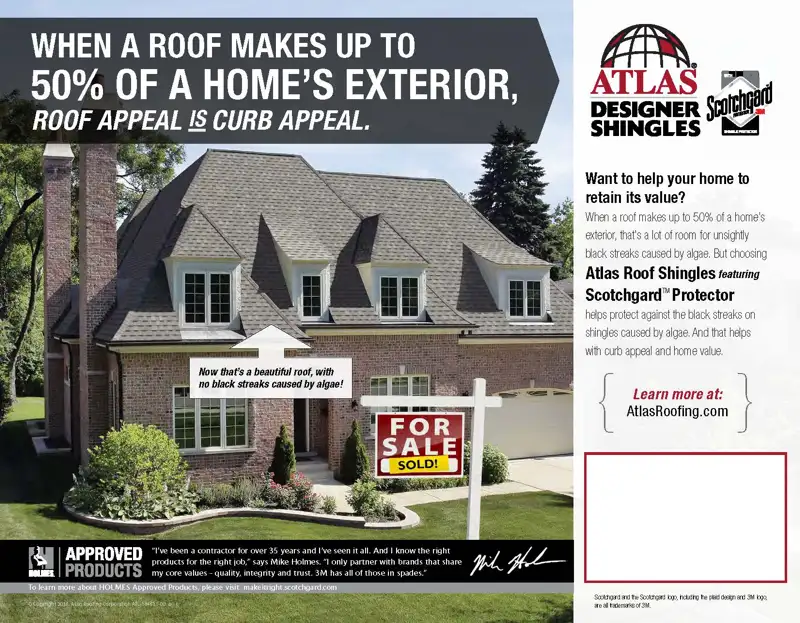
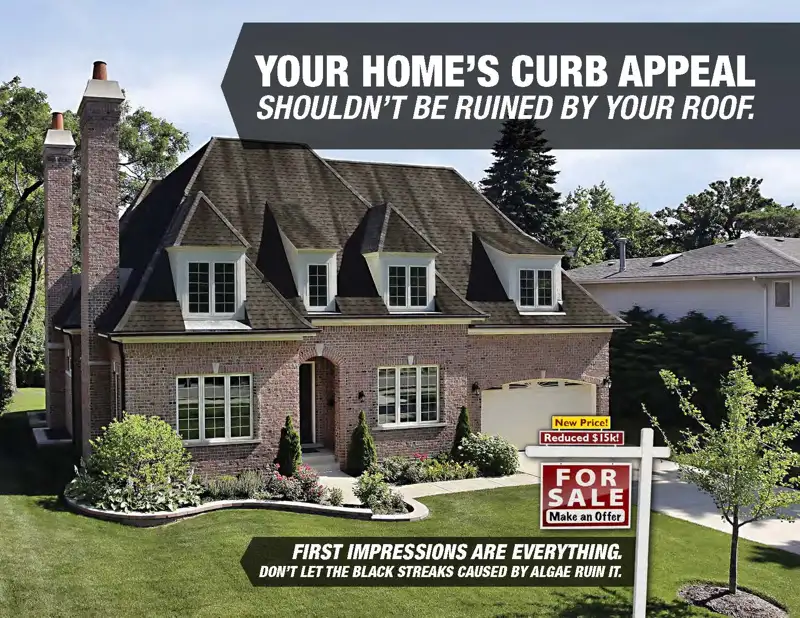
Products like Atlas Roof Shingles featuring Scotchgard™ Protector are specifically designed to prevent these black streaks, ensuring your roof remains beautiful and functional for years to come. Investing in professional roof cleaning services and high-quality roofing materials can significantly boost your home’s appearance and value.
Conclusion
In conclusion, understanding the causes and consequences of black streaks on shingle roofs is crucial for maintaining the longevity and aesthetics of your home. By recognizing early signs, implementing preventative measures, and choosing appropriate cleaning methods, you can safeguard your roof against damaging algae growth.
Regular maintenance and investing in algae-resistant materials are key to preserving the integrity of your roof. Remember, a well-maintained roof not only enhances the appearance of your property but also ensures its structural durability in the long run. Stay informed and proactive to keep your roof streak-free and in top condition.
Be sure to visit our blog to learn all you need to know about roofing!
Frequently Asked Questions About Black Streaks on Shingle Roofing
Here are some frequently asked questions to help you better understand and address black streaks on shingle roofing.
Can Black Streaks Cause Permanent Damage?
Black streaks on shingle roofs, caused by algae growth, do not typically cause permanent damage. However, if left untreated, algae growth can lead to shingle degradation and compromise the integrity of the roof. Regular cleaning and maintenance can help prevent long-term damage and extend the lifespan of the roof, minimizing the need for costly repairs.
How Often Should I Inspect My Roof for Black Streaks?
It is recommended to inspect your roof for black streaks caused by algae growth at least once a year. Regular inspections and early detection can help address the issue promptly and prevent further damage. Consider hiring a professional roof inspector for a thorough assessment and maintenance recommendations.
Are There Eco-Friendly Cleaning Options Available?
Yes, eco-friendly cleaning options are available for removing black streaks caused by algae growth on shingle roofs. Products such as Wet & Forget Outdoor offer non-toxic, biodegradable solutions that effectively remove algae stains without harming the environment. These sustainable cleaning options provide a safe and effective way to maintain a clean, algae-free roof.
Is Pressure Washing Bad For Shingle Roofing?
If you have a composition shingle roof, avoid pressure washing. The high pressure can dislodge the granules and cause undue damage to the shingles. Instead, use a brush-off solution, which is a gentler method for removing moss build-up.
Ready to Solve Your Roofing Problems?
At Roof Rescue, we understand the importance of maintaining a clean, durable, and aesthetically pleasing roof. Our team of experienced professionals is dedicated to delivering top-quality roofing services that not only address your current roofing issues but also prevent future problems. From roof inspections and repairs to full roof replacements and installations, we offer a comprehensive range of services tailored to meet your specific needs.
Don’t let black streaks or any other roofing issues compromise your home’s safety and beauty. View our services and schedule your free inspection today. Trust Roof Rescue to protect your home with the care and expertise it deserves. Contact us now at (225) 369-3601 or fill out the form below to book your appointment!

